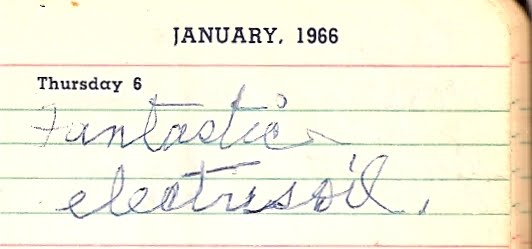I learned the Asylum published a newspaper in support of fundraising called The Orphan's Friend. I wondered if there was any possibility of tracking down the paper, but while doing some internet searches on that, I discovered the orphanage still exists, but in a different incarnation as the Cayuga Home for Children. They provide services for children and families who need various types of support and assistance.
On a whim, I decided to send an email to the general information address. My email was pretty basic and said:
My great-great-grandfather (a mistake in the original email- -he was only my great-grandfather) was in the orphanage around 1863. Do you have any historical records or know of a resource for me?I received back an unexpected response:
I love this kind of question!
I responded with the details--You can imagine my excitement as I waited for a response to see if they found anything. I could hardly contain myself.
We have most of the original ledger books listing children's placement and discharge information. If you can give me any details you know about your great great grandfather, I'll take a look and see what I can find. I can photocopy what we have and send it out.
And before I could post this, I got an email response and the first sentence made my heart sink:
I wish I had more information to share with you.But then the rest!
I couldn't find anything about George in our ledger book, but did find information about Richard, Hopkins, Standford and Albert. It's interesting that the older three were brought here the same date, and the younger one not until a year later. I'll transcribe it here for you, and will make photocopies of the handwritten entries and send them to you along with a 150th anniversary booklet done 10 years ago - it gives a little history as well as a photo of the building where the children would have lived in the mid 1860's. We looked several years after Albert was placed, and at other kids named George and I also searched on the name Murry as that's a name I found in some census records that seem to show the whole family in 1860 - I'm including the web addresses of a couple other mentions of the adults - I tracked them down on the Cayuga County GenWeb site, which you may already be familiar with. You may be able to find the families the boys went to, but there's not a lot of information listed.
It seems a common practice that children were "taken on trial" by area residents. I don't know what that meant - were they like foster children? Where they going to be adopted? Some kids were taken, returned, and taken again. And we've seen the word "bound" on some records - were they like indentured servants? I'd like to explore that sometime.
Cayuga Asylum for Destitute Children Ledger Volume 1 April 1852 - June10, 1875
Page 68John Richard Murray aged 11 yearsBrought by the overseer poor from Auburn Jan 9th 1861. Taken by WilliamWarick of Aurelius June 3rd returned June 12 taken on trial August 15 bySolomon ??Garnber?? of Varick Seneca Co. Bound
Page 68Hopkins Murray aged 9 yearsBrought to the Asylum by overseer Tuttle Jan 9th 1861 from Auburn July8th '65 was taken on trial by Mr. Yates of Auburn
Page 68Stanford Murray aged 7 years Sept 18 1861Brought to the Asylum with the above at the same date. Was taken ontrial by Mr. Clark Cummings Groton Tompkins Co. 12 Sept '63
Page 83Albert Murray aged 6 years March 3rd 1862Brought to the Asylum by the overseer of the poor Feb 13th 1862 Wastaken on trial by Mr. Daniel Brink of Summer Hill Sept 9 '63
I received the copies yesterday, including:
Talk about an act of genealogical kindness. I'm making a donation to the Cayuga Home today.








